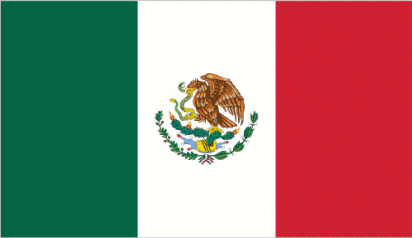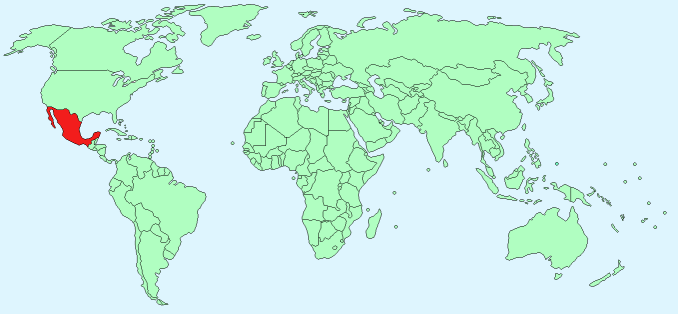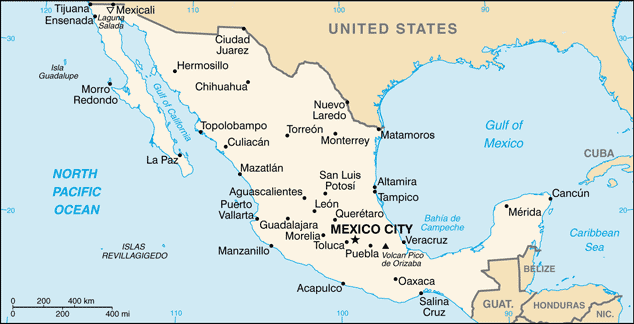Mexico


Continent – North America
Region – Central America
Size – 1,964,375 km²
Geography – some desert, mountains with plateaux and coastal plains
Language – Spanish 92%, Mayan and other indigenous 8%
Religion – Roman Catholic 82.7%, other Christian 8%, none 4.7%, other 4.6%
Monetary Unit – Mexican peso
Natural Resources – petroleum, silver, copper, gold, lead, zinc, natural gas, timber
Agriculture – corn, wheat, soybeans, rice, beans, cotton, coffee, fruit, tomatoes; beef, poultry, dairy products; wood products
Industry – food and beverages, tobacco, chemicals, iron and steel, petroleum, mining, textiles, clothing, motor vehicles, consumer durables, tourism

Neighbouring Countries – United States of America, Belize, Guatemala
Population – 120,286,655 (2014 estimate)
Population Growth Rate – 1.21%
Average Life Expectancy – 75.43
Capital City – Mexico City (20,843,000)
Highest Mountain – Volcan Pico de Orizaba (5,675 m)
Longest River – Rio Grande (total length 3051 km)
Climate – tropical, sub-tropical – south, Yucatan peninsula and coast 18°C – 40°C all year, north and higher regions 16°C – 30°C
Yearly Rainfall – Central and desert region – negligible, Coastal regions 40cm (approx) mostly May to October
Plant Life – rain forest, mahogony, ceiba, eucalyptus, jacaranda, cocoa, vanilla, avocado, desert flowers, cactii, scrub, poinsettias, hibiscus
Animal Life – armadillo, tapir, opossum, puma, jaguar, bear, monkey, deer, boar, snakes, lynx, coyote, armadillo, lizard, scorpion, crocodile
Bird Life – toucans, parrots, hummingbirds, flamingoes
Marine Life – grey whales, seals, dolphins, sea turtles
Harvard Reference for this page:
Heather Y Wheeler. (2015). Mexico. Available: https://www.naturalhistoryonthenet.com/Facts_Figures/Country_Facts/mexico.htm. Last accessed Tuesday, July 19, 2016
Facts and Figures Pages
